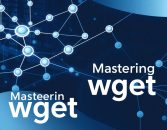The Digital Gold Rush: Understanding Web Scraping‘s Transformative Power
Imagine standing at the intersection of technology and information, where every website becomes a potential treasure trove of insights. Web scraping isn‘t just a technical skill—it‘s a strategic approach to understanding the digital landscape. As someone who has navigated the complex world of data extraction for years, I‘m excited to share the nuanced art of web scraping using Selenium.
The digital ecosystem is evolving rapidly, and data has become the most valuable currency. Web scraping represents more than a technical process; it‘s a sophisticated method of extracting meaningful patterns from the vast ocean of online information. Selenium emerges as a powerful tool in this context, offering developers and analysts an unprecedented ability to interact with web environments dynamically.
Historical Context: The Evolution of Web Scraping Technologies
Web scraping didn‘t emerge overnight. Its roots trace back to the early days of the internet when researchers and technologists sought ways to aggregate and analyze online information. Initially, simple scripts would download entire web pages, with developers manually parsing HTML. As websites became more complex, traditional methods quickly became obsolete.
The introduction of JavaScript-heavy websites created significant challenges. Static HTML parsing tools like BeautifulSoup became insufficient. Developers needed a solution that could interact with web pages precisely as a human would—clicking buttons, filling forms, and navigating complex interfaces. This is where Selenium revolutionized web scraping.
Selenium‘s Technical Architecture: A Deep Dive
Selenium operates as a sophisticated browser automation framework, providing unprecedented control over web interactions. Unlike traditional scraping libraries, Selenium simulates real user behavior by directly controlling web browsers. This approach allows it to handle dynamically rendered content, JavaScript-loaded elements, and complex web applications.
The WebDriver protocol sits at the heart of Selenium‘s architecture. It provides a language-agnostic interface for controlling web browsers, supporting multiple programming languages including Python, Java, and JavaScript. This flexibility makes Selenium an incredibly powerful tool for developers across different technological ecosystems.
Proxy Management and IP Rotation Strategies
One of the most critical aspects of professional web scraping involves managing IP addresses effectively. Websites implement sophisticated detection mechanisms to identify and block automated scraping attempts. Successful data extraction requires a nuanced approach to IP management.
Modern proxy rotation strategies involve:
- Residential proxy networks
- Geographically distributed IP pools
- Intelligent request throttling
- Dynamic user-agent rotation
def create_robust_scraper(proxy_list):
"""
Advanced proxy management function demonstrating
intelligent IP rotation and browser configuration
"""
options = webdriver.ChromeOptions()
proxy = random.choice(proxy_list)
options.add_argument(f‘--proxy-server={proxy}‘)
options.add_argument(‘--disable-blink-features=AutomationControlled‘)
driver = webdriver.Chrome(options=options)
driver.execute_cdp_cmd(‘Network.setUserAgentOverride‘, {
"userAgent": generate_random_user_agent()
})
return driverAnti-Scraping Techniques: Navigating Digital Minefields
Websites have developed increasingly sophisticated methods to detect and prevent web scraping. These techniques range from simple IP blocking to complex behavioral analysis algorithms. Understanding these mechanisms is crucial for developing resilient scraping strategies.
Common anti-scraping techniques include:
- Browser fingerprinting
- CAPTCHA implementation
- Dynamic element rendering
- Behavioral pattern analysis
Successful scraping requires a multi-layered approach that mimics human browsing behavior while remaining technically sophisticated. This involves randomizing request patterns, implementing intelligent waiting mechanisms, and continuously adapting to changing website structures.
Ethical Considerations and Legal Boundaries
Web scraping exists in a complex legal and ethical landscape. While data represents a valuable resource, accessing it requires careful consideration of ethical guidelines and potential legal restrictions. Responsible scraping practices involve:
- Respecting website terms of service
- Obtaining necessary permissions
- Avoiding excessive server load
- Protecting individual privacy
- Maintaining transparency about data collection methods
Advanced Implementation Strategies
Professional web scraping goes far beyond simple data extraction. It requires a holistic approach that considers performance, reliability, and scalability. Implementing robust error handling, designing modular scraping architectures, and developing adaptive algorithms are essential skills.
Performance Optimization Techniques
from concurrent.futures import ThreadPoolExecutor
def parallel_scraping_strategy(urls, max_workers=10):
"""
Implement parallel scraping using thread pools
for enhanced performance and efficiency
"""
results = []
with ThreadPoolExecutor(max_workers=max_workers) as executor:
futures = [executor.submit(scrape_single_url, url) for url in urls]
for future in concurrent.futures.as_completed(futures):
results.append(future.result())
return resultsMarket Landscape and Emerging Trends
The web scraping market is experiencing exponential growth, projected to reach $4.3 billion by 2027. Industries like e-commerce, financial services, and market research are increasingly relying on sophisticated data extraction techniques.
Emerging trends include:
- Machine learning-enhanced scraping
- AI-powered data validation
- Blockchain-based data authentication
- Advanced proxy network technologies
Conclusion: Navigating the Future of Data Extraction
Web scraping with Selenium represents a powerful intersection of technology, strategy, and insight generation. By mastering these techniques, you‘re not just collecting data—you‘re unlocking strategic intelligence that can transform businesses and research initiatives.
Remember, successful web scraping is an art form that combines technical skill, strategic thinking, and ethical consideration. Continuously learn, adapt, and approach each scraping project with curiosity and respect for the digital ecosystem.
Recommended Learning Path
- Master Python fundamentals
- Deep dive into Selenium WebDriver
- Study advanced networking concepts
- Explore proxy management technologies
- Practice ethical data collection






